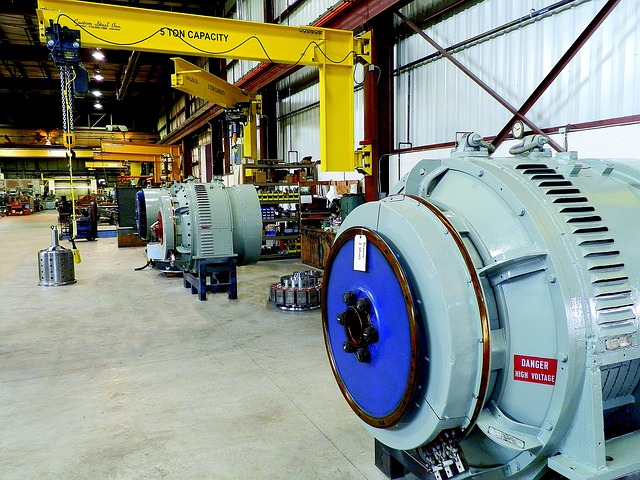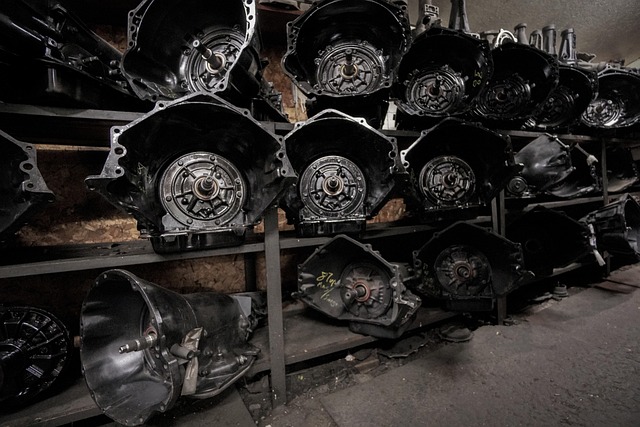Optimizing Vehicle Repairs: OEM Certified Centers’ Customer Satisfaction Secrets
OEM Certified Collision Centers provide top-tier factory standard repair services for vehicle bodywo…….
In the realm of manufacturing and industrial maintenance, “Factory Standard Repair” stands as a meticulous process aimed at revitalizing equipment to its original manufacturer-specified condition. This comprehensive approach involves a detailed understanding of the equipment’s design, meticulous disassembly, precise replacement or refurbishment of components, and careful reassembly, ensuring every element adheres to the manufacturer’s exacting standards. The concept is not merely about fixing broken machinery but about preserving the integrity of a product’s design and performance throughout its service life.
This article delves into the intricacies of Factory Standard Repair (FSR), exploring its historical roots, global impact, economic implications, technological innovations, regulatory landscape, challenges, successful case studies, and future prospects. By examining these facets, we aim to provide an insightful guide for professionals, researchers, and enthusiasts alike, shedding light on why FSR is a critical aspect of modern manufacturing and equipment maintenance.
Definition: Factory Standard Repair refers to the process of restoring a piece of machinery or industrial equipment to its original condition as specified by the manufacturer. It involves a systematic disassembly, inspection, repair, and reassembly, ensuring every part meets the exacting standards set by the original equipment manufacturer (OEM).
Core Components:
Disassembly and Inspection: The first step is meticulously dismantling the equipment while documenting each component’s condition. This process identifies damaged or worn-out parts and provides a comprehensive view of the machinery’s internal structure.
Component Replacement/Refurbishment: Based on the inspection, original or certified replacement parts are sourced and installed. For certain components, refurbishment techniques may be employed to extend their lifespan, ensuring they meet the required specifications.
Precision Assembly: Reassembly is conducted with meticulous care, following detailed assembly manuals or CAD (Computer-Aided Design) models. This step ensures all parts are correctly positioned and fastened, adhering to the OEM’s torque and tightening specifications.
Testing and Calibration: Post-repair, equipment undergoes rigorous testing and calibration routines to validate its performance against the manufacturer’s standards.
Historical Context: The concept of FSR has deep roots in manufacturing history, dating back to the early 20th century when industrial machinery became more complex and critical to production processes. As equipment evolved, so did the need for specialized repair techniques. In the post-World War II era, as industries boomed, maintaining equipment at peak performance became a priority, leading to the development of structured repair methods. Over time, FSR evolved from a simple fix to a sophisticated process, incorporating advanced technologies and precision techniques.
Significance: Factory Standard Repair is significant for several reasons:
Equipment Reliability: It ensures machinery operates at optimal levels, enhancing production efficiency and reducing downtime.
Product Quality: Restoring equipment to OEM standards maintains product consistency and quality, crucial for industries where precision is paramount.
Cost-Effectiveness: In many cases, FSR can be more cost-effective than replacing entire systems, especially for specialized or custom-built equipment.
Environmental Impact: By extending equipment lifespan, FSR contributes to sustainability efforts by reducing the demand for new resources and minimizing electronic waste.
Factory Standard Repair is a global phenomenon, with varying degrees of adoption and unique regional dynamics.
International Influence:
North America: Known for its robust manufacturing sector, North American industries have long embraced FSR as a critical component of maintenance strategies. Automotive, aerospace, and heavy machinery manufacturers lead the way in implementing structured repair processes.
Europe: European countries, particularly Germany, are renowned for their precision engineering and advanced industrial practices. FSR is deeply ingrained in their manufacturing culture, with a focus on quality and longevity.
Asia-Pacific: Rapidly growing economies in this region, such as China and South Korea, are increasing their investment in FSR to support their expanding manufacturing bases. This trend is driven by the need for high-quality, cost-effective maintenance solutions.
Trends Shaping FSR:
| Trend | Impact | Example |
|---|---|---|
| Digitalization and IoT (Internet of Things) | Enables remote monitoring and predictive maintenance, reducing unplanned downtime. | Smart sensors in machinery track performance data, allowing for proactive repair scheduling. |
| Additive Manufacturing (3D Printing) | Offers on-demand component replacement and customization, enhancing repair capabilities. | Customized parts can be printed based on specific OEM designs, ensuring precise fits. |
| Lean Manufacturing Principles | Emphasizes waste reduction and continuous improvement, streamlining FSR processes. | Just-in-time inventory management ensures only necessary parts are stocked, minimizing storage costs. |
| Global Sourcing of Parts | Expands the availability of high-quality replacement parts, facilitating faster repairs. | International partnerships enable access to specialized components, ensuring timely replenishment. |
The economic landscape surrounding Factory Standard Repair is complex, involving multiple factors and stakeholders.
Market Dynamics:
Demand Drivers: Industries with high-value, complex equipment, such as automotive, aerospace, and power generation, drive the demand for FSR services.
Competition: The market is characterized by a mix of specialized repair shops, OEM-backed service centers, and multinational corporations offering global repair solutions.
Pricing Strategies: Repair costs vary based on equipment complexity, part availability, labor rates, and travel expenses (for on-site repairs).
Investment Patterns:
OEM Investments: Original Equipment Manufacturers invest heavily in FSR capabilities to support their product warranties and maintain customer satisfaction.
End-User Spending: Industries adopting FSR often allocate substantial budgets for equipment maintenance, recognizing its long-term benefits.
Economic Impact:
Job Creation: FSR activities generate employment opportunities ranging from skilled technicians to administrative staff, contributing to local economies.
Supply Chain Growth: The demand for specialized parts and tools stimulates the growth of a robust supply chain, fostering innovation and competition.
Technological innovations have revolutionized Factory Standard Repair, making processes faster, more accurate, and environmentally friendly.
Robotic Systems:
Automation Benefits: Robots enhance precision assembly, disassembly, and welding tasks, reducing human error and improving productivity.
Case Study: Automotive Industry: Tesla’s repair facilities employ robotic systems for complex body shop operations, ensuring consistent quality and speed.
Computer-Aided Design (CAD) and Manufacturing (CAM):
Design Accuracy: CAD software allows for the creation of precise 3D models, aiding in disassembly, assembly, and component design.
Reverse Engineering: CAM technologies enable the production of custom parts by reverse engineering original designs, ensuring exact fits.
Augmented Reality (AR) and Virtual Reality (VR):
Training Simulations: AR/VR headsets provide immersive training environments, allowing technicians to learn complex repair procedures in a safe setting.
Remote Assistance: AR can offer real-time guidance during repairs, where experts remotely support on-site technicians via augmented visuals.
The regulatory landscape surrounding Factory Standard Repair varies globally, with each region’s laws and guidelines shaping the industry.
Key Policies and Regulatory Frameworks:
Warranty and Product Liability Laws: These ensure manufacturers stand behind their products, often influencing FSR practices to maintain customer trust.
Environmental Regulations: Many countries have strict rules regarding electronic waste disposal, encouraging responsible repair and recycling practices.
Safety Standards: Occupational Safety and Health Administration (OSHA) guidelines in the US, for instance, set standards for workplace safety during repair operations.
International Trade Agreements: These can impact FSR by dictating import/export regulations for equipment and parts, especially in regions with stringent quality control measures.
Impact on FSR Development:
Compliance Requirements: Businesses must adhere to local regulations, which may drive innovation in FSR technologies and practices to meet these standards.
Standardization: Regulatory bodies often publish guidelines for repair procedures, ensuring consistency across industries. These standards can be a benchmark for best practices.
Despite its numerous benefits, Factory Standard Repair faces challenges and criticisms that require addressing for sustainable growth.
Main Challenges:
Skill Shortage: The demand for skilled technicians often exceeds the available talent pool, particularly in specialized areas like robotics and additive manufacturing.
Part Availability: Sourcing genuine OEM parts can be challenging, especially for older or discontinued equipment, leading to extended repair times.
Cost-Effectiveness: For some complex repairs, the labor costs may outweigh the benefits, causing organizations to question the viability of FSR.
Criticisms and Solutions:
Overemphasis on Originality: Critics argue that strict adherence to OEM specifications can limit innovation in repair methods. To counter this, industries should promote a balance between standards and adaptive solutions.
Environmental Concerns: The use of disposable parts and single-use tools contributes to waste. Adopting sustainable practices, such as recycling and repurposing, can mitigate these issues.
Global Accessibility: In developing regions, access to advanced FSR technologies and training may be limited. International collaborations and knowledge-sharing initiatives can address this disparity.
Case Study 1: Boeing’s Wing Repair Program
Boeing, a global aerospace giant, faced the challenge of repairing wings on its 747 aircraft, which required meticulous precision. They implemented a structured FSR program that included:
Digital Modeling: Detailed CAD models of wing components enabled precise measurement and analysis.
Robotic Welding: Advanced robots performed complex welding tasks with high accuracy, reducing manual error.
Additive Manufacturing: Custom wing parts were printed on-demand, ensuring quick turnaround times for rare or damaged components.
This program significantly reduced repair times, lowered costs, and enhanced Boeing’s ability to maintain a large fleet of aircraft efficiently.
Case Study 2: Volkswagen’s Engine Overhaul Process
Volkswagen, in collaboration with various suppliers, developed a comprehensive FSR program for engine overhauls. Key elements included:
Computerized Diagnostics: Advanced diagnostic tools identified worn or damaged parts, guiding technicians during the disassembly process.
Standardized Procedures: Detailed step-by-step guides ensured consistent engine overhaul quality across multiple repair centers.
Reconditioning Programs: Volkswagen promoted the reconditioning of certain engine components, reducing waste and lowering costs for customers.
This initiative resulted in increased customer satisfaction, reduced environmental impact, and improved operational efficiency.
The future of Factory Standard Repair is poised for significant growth and transformation, driven by technological advancements and evolving industry needs.
Potential Growth Areas:
Smart Factories and Industry 4.0: The integration of FSR with smart factory concepts will enable real-time monitoring, predictive maintenance, and automated repair processes.
Digital Twin Technology: Creating digital replicas of physical equipment allows for virtual testing and simulation of repair scenarios, optimizing the process.
Advanced Materials: The adoption of new materials, such as composites and advanced alloys, presents challenges and opportunities for FSR technicians, requiring specialized training.
Emerging Trends:
Remote Repair Assistance: AR/VR technologies will enable remote experts to guide on-site technicians, expanding access to specialized knowledge.
Artificial Intelligence (AI) in Diagnostics: AI algorithms can analyze sensor data and historical maintenance records to predict equipment failures, enabling proactive FSR strategies.
Decentralized Repair Networks: Localized repair hubs and peer-to-peer service sharing models may gain prominence, enhancing accessibility and reducing costs.
Factory Standard Repair is not merely a maintenance practice; it is a testament to human ingenuity and our commitment to sustainability. As the world of manufacturing evolves, FSR will continue to play a pivotal role in ensuring equipment reliability, product quality, and environmental stewardship. By embracing technological advancements, adhering to global standards, and addressing challenges head-on, we can shape a future where FSR becomes increasingly efficient, accessible, and integral to industrial operations worldwide.
Q1: What is the primary goal of Factory Standard Repair?
A1: The primary goal is to restore equipment to its original manufacturer-specified condition, ensuring optimal performance, longevity, and consistency in product quality.
Q2: How does FSR differ from general equipment repair?
A2: FSR goes beyond basic repairs; it involves a structured, meticulous process with detailed documentation, specific replacement parts, and precise assembly, all aimed at replicating the OEM’s design and performance.
Q3: Are there any environmental benefits to FSR?
A3: Absolutely! FSR promotes equipment longevity, reduces electronic waste, and minimizes the demand for new resources during maintenance, contributing to a more sustainable manufacturing landscape.
Q4: What role does technology play in modern FSR practices?
A4: Technology is transforming FSR with advanced tools like robotics, CAD/CAM systems, AR/VR training, and AI diagnostics. These innovations enhance accuracy, speed, and accessibility in repair processes.
Q5: How can industries ensure the availability of genuine OEM parts for FSR?
A5: Building strong supplier relationships, maintaining extensive part catalogs, and adopting global sourcing strategies can help secure a consistent supply of authentic OEM parts for effective FSR.

OEM Certified Collision Centers provide top-tier factory standard repair services for vehicle bodywo…….

Choosing an OEM collision repair certified shop is crucial for ensuring your vehicle receives factor…….

OEM Certified Repairs offer factory standard repairs for bumpers and panels using Original Equipment…….

OEM-certified repairs offer superior quality and reliability for vehicle maintenance by adhering to…….

OEM Collision Certification ensures vehicles, especially premium brands like Mercedes-Benz, are repa…….

OEM certified collision repair ensures luxury vehicles like Mercedes-Benz are restored to pre-incide…….

OEM (Original Equipment Manufacturer) certification is vital for maintaining factory standard repair…….